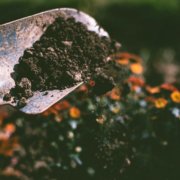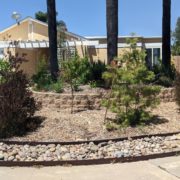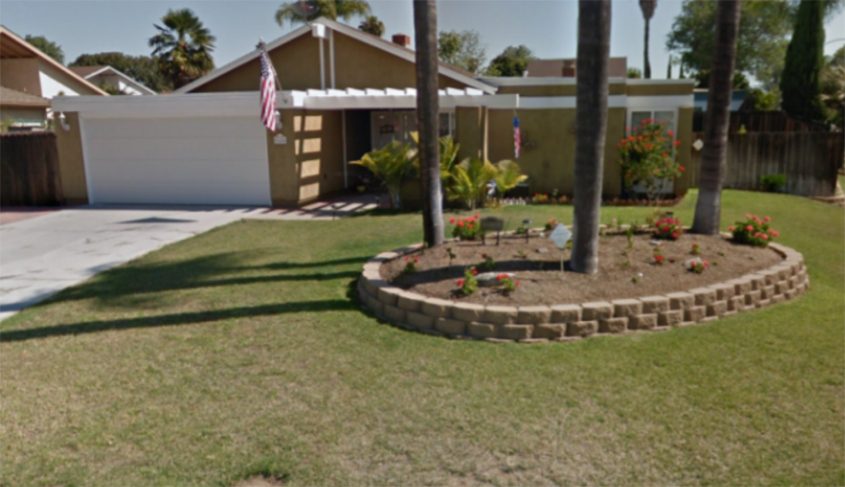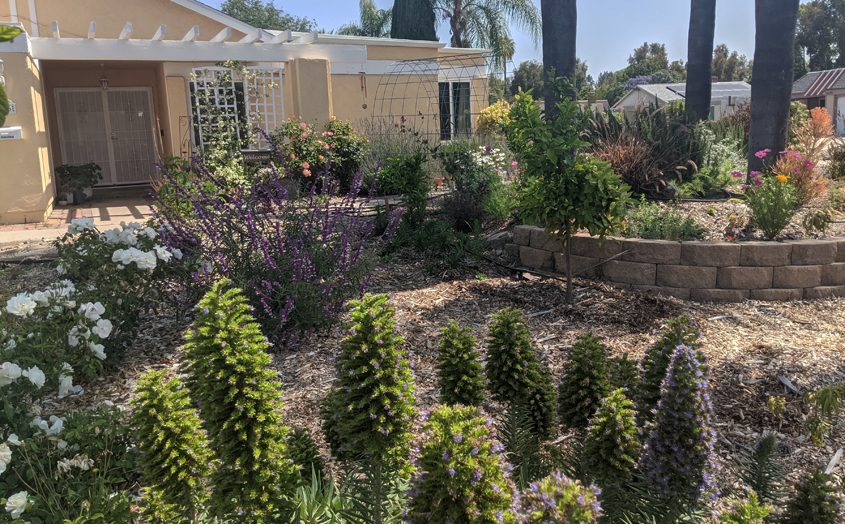Soil is essential to a healthy landscape and efficient water use. Learn about your soil’s characteristics and how to care for it. The results include easier maintenance, a healthier environment, and a more beautiful landscape.
Here are some simple tests to help you evaluate your soil.
Soil Drainage Assessment
Evaluate your results based on the drainage rate. First, dig a hole 12 inches wide by 12 inches deep. Set aside the soil for additional tests.
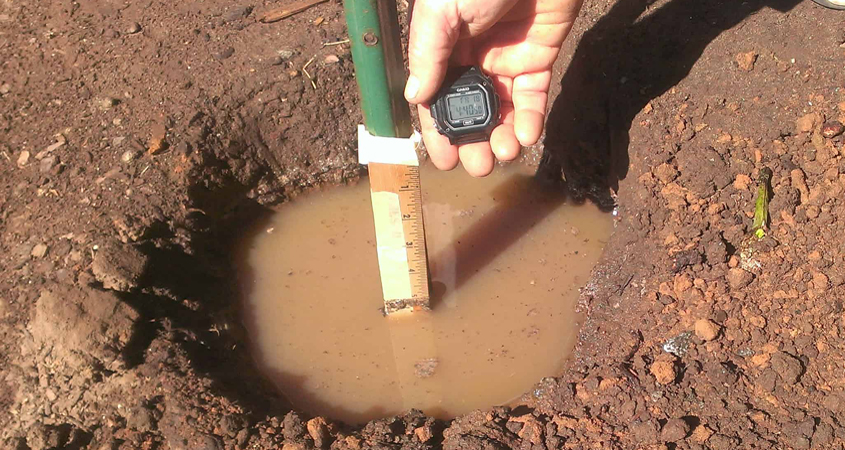
A simple, quick test will tell you how well your soil drains. Photo: Greywater.org
Next, fill the hole with water. Let it drain overnight. Then fill the hole with water a second time. Set a stick in the hole so water just reaches the top. In one hour, measure the drop in water from the top of the stick in inches.
Drainage less than one inch per hour: Poor Drainage. This may be due to high clay content or soil compaction. Add compost to the soil before planting to improve soil aggregation and water infiltration. Select plants that can tolerate poor drainage or consider using raised beds or mounds. Regular surface applications of shredded mulch may be helpful for long-term management. Irrigation should be scheduled for short cycles and long soak periods to meet plant water demand and avoid runoff.
Drainage is between one to three inches per hour: Acceptable Drainage.
Drainage more than three inches per hour: Water moves too quickly through your soil. Add compost before planting to hold the water in the root zone longer and select plants tolerant of fast drainage. Regular surface applications of shredded mulch may be helpful for long term management. Irrigation scheduling may require longer watering times to ensure plants have enough available water at the root zone.
The Worm Test is another method of providing insight into the health of your soil biology. Sift through the soil removed to perform the drainage test. If you can’t find at least ten earthworms, your soil is low on organics and will benefit from the addition of compost when planting. Use shredded mulch after planting to continue to feed the beneficial organisms. Worms help reduce soil compaction, allowing water and air to move into the soil to provide healthy growing conditions and maximize efficient water usage.
Determine Your Landscape Soil Type: Squeeze It and Jar It
The Squeeze Test can help you determine the texture of your soil. Start by taking a handful of moistened (but not wet) soil and squeeze it firmly. Open your hand and determine which of the following it most resembles.
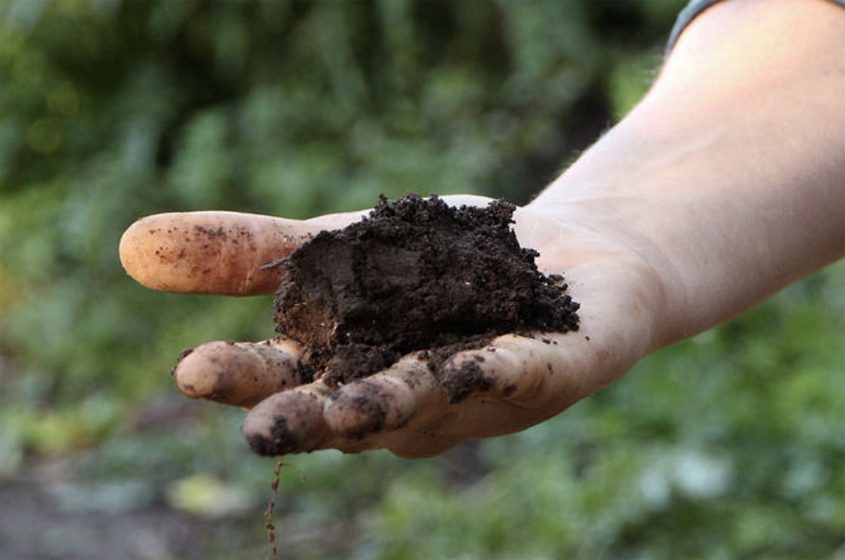
This soil isn’t retaining enough moisture. Photo: UC Santa Cruz
High sand content soil. A ball of soil falls apart when you open your hand.
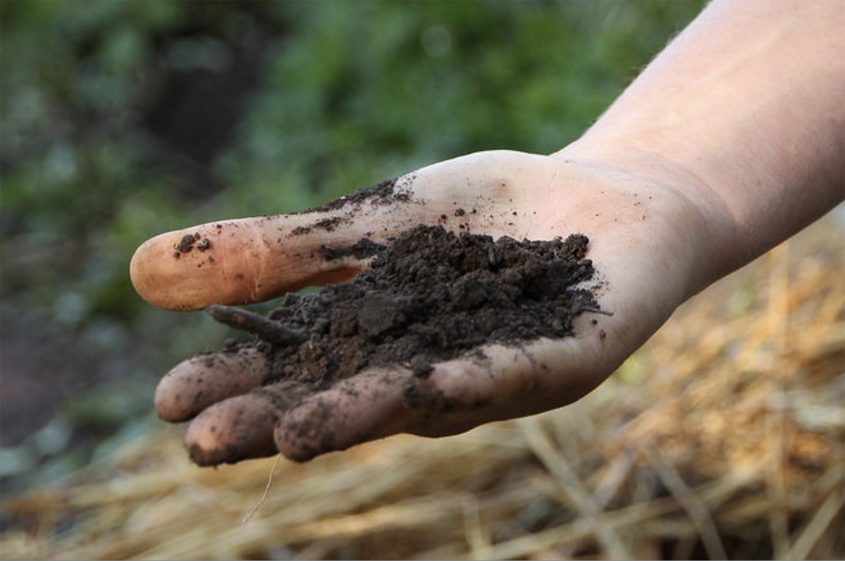
This soil retains the correct and healthy amount of moisture. Photo: UC Santa Cruz
Loamy soil. The ball of soil holds its shape but crumbles when you poke it lightly.
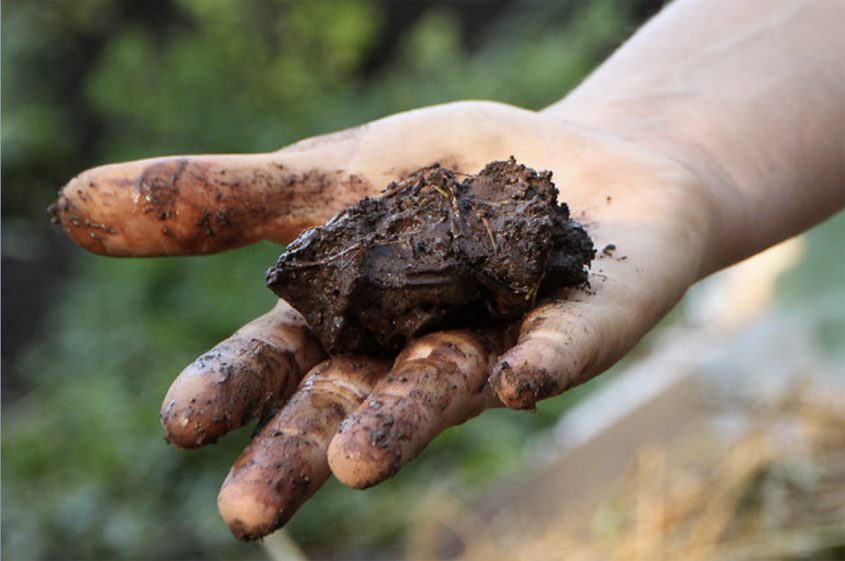
This soil retains too much moisture. Photo: UC Santa Cruz
High clay content soil. Holds its shape and does not crumble when you poke it lightly. Sand is quick draining but has a limited ability to retain nutrients and moisture. Sandy soils often benefit from the addition of organic matter.
Loam is generally considered ideal soil because it retains moisture and nutrients but doesn’t stay soggy. Clay is typically nutrient-rich but has poor drainage. Drainage can sometimes be improved by deep cultivation which breaks up the hard layer of soil
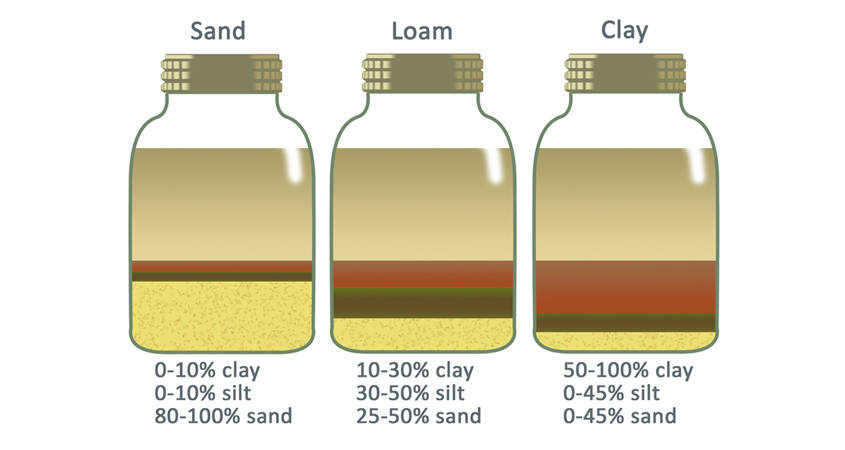
Use this graphic as an example. Aim to get the most even distribution, as shown with the loam jar. Image: San Diego County Water Authority
For the Jar Test, use a one-quart size glass container, such as a Mason Jar. Add one cup of soil from the garden. Add three cups of distilled water. Close and shake the jar until all solids are suspended in water.
Place the container on a shelf and wait 24 hours. If the container is cloudy, then wait another 24 hours. After 48 hours, the layers should be settled with sand on the bottom, silt in the middle, and clay on top.
Measure the layers in proportion to each other. Refer to the graphic to determine your soil type based on the proportions of sand, silt, and clay. Refer to the USDA soil triangle with the soil separation percentages to determine your soil texture.
__________________________________________________________

(Editor’s Note: The San Diego County Water Authority and its 24 member agencies offer programs, resources, and incentives to improve water-use efficiency for residential, commercial, and agricultural users. WaterSmart choices are a way of life in the region. Stay WaterSmart San Diego! For more water-use efficiency resources, go to WaterSmart.SD.org.)

